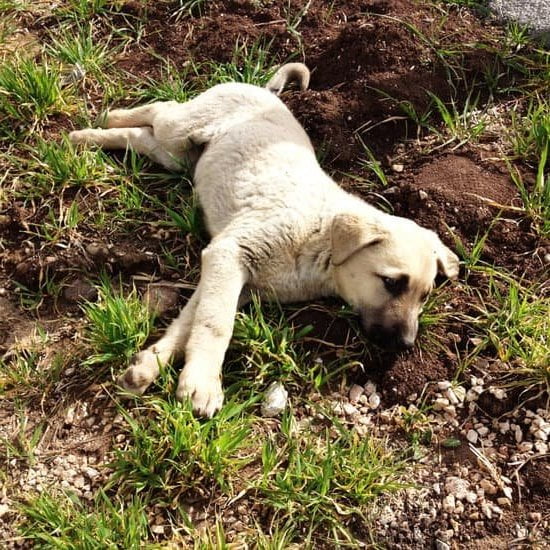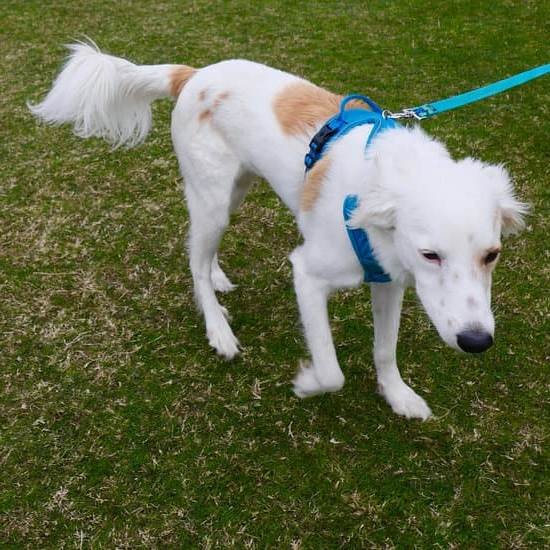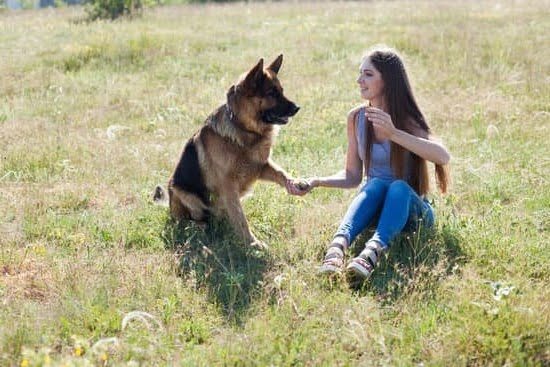Are you interested in learning how to train your dog as a protection dog? Training a dog to act as a protector requires understanding the role and responsibilities of a protection dog, selecting the right breed for training, and implementing various training techniques. This article will provide a comprehensive guide on how to train your dog to become an effective protection dog.
When it comes to understanding the role of a protection dog, it is important to acknowledge that these dogs are trained to guard their owners, property, or territory from potential threats. They are not aggressive by nature, but rather possess the skills and training needed to react appropriately in dangerous situations. Protection dogs serve as personal bodyguards and can provide a sense of security and safety for their owners.
Selecting the right breed for protection training is crucial in ensuring success. Certain breeds are naturally inclined towards protective behaviors and have the physical capabilities needed for this type of training. Basic obedience training is essential before delving into specific protection training techniques.
Building trust and a strong bond with your dog is also fundamental in creating an effective protection team. Stay tuned as we explore these topics further in this article on how to train your dog as a protection dog.
Selecting the Right Breed for Protection Training
When it comes to selecting the right breed for protection training, there are several important factors to consider. Not all dog breeds are suitable for protection work, so it’s crucial to choose a breed that has the right temperament, drive, and physical attributes for this type of training.
Temperament and Drive
One of the most important aspects to consider when selecting a breed for protection training is their temperament and drive. Protection dogs need to have a natural instinct to protect their family and territory while also being trainable and obedient. Breeds such as German Shepherds, Rottweilers, Doberman Pinschers, and Belgian Malinois are known for their loyal and protective nature, making them ideal candidates for protection training.
Physical Attributes
In addition to temperament and drive, the physical attributes of a dog are also important when selecting a breed for protection training. A protection dog needs to be strong, agile, and have good stamina in order to perform their duties effectively. Breeds with a large build and muscular physique are often preferred for protection work as they can provide both intimidation and physical defense if necessary.
Health Considerations
When choosing a breed for protection training, it’s essential to take into account the overall health of the dog. Breeds that are prone to hereditary health issues or have specific genetic predispositions may not be well-suited for the demands of protection work. It’s important to select a breed that is known for its overall good health and longevity in order to ensure that your protection dog will be able to fulfill its role effectively.
Overall, selecting the right breed for protection training is a crucial first step in the process of training your dog as a protection dog. By considering factors such as temperament, drive, physical attributes, and health considerations, you can ensure that you choose a breed that is well-suited for this specialized type of training.
Basic Obedience Training for Protection Dogs
Basic obedience training is an essential foundation for any protection dog, as it establishes a strong communication and trust between the dog and the owner. This training lays the groundwork for more advanced protection training techniques and ensures that the dog understands and responds to basic commands in a variety of situations.
Importance of Basic Obedience Training
Before diving into protection training, it is crucial to ensure that your dog has mastered basic obedience commands such as sit, stay, come, heel, and down. These commands are not only useful for everyday control of your dog but also play a crucial role in protection work. A well-trained protection dog should be responsive to these commands under various circumstances, including distractions or stressful situations.
Training Techniques
Using positive reinforcement techniques such as treats, praise, and toys can effectively teach your dog basic obedience commands. Consistency and patience are key when training your dog, as every repetition helps to reinforce the desired behavior. It is important to practice obedience commands in different environments to generalize the behavior and ensure that your dog can respond in any situation.
Professional Assistance
For owners who are new to dog training or unsure about how to train your dog as a protection dog, seeking professional assistance from experienced trainers or attending obedience classes can be beneficial. Professional trainers can provide guidance on effective training techniques, troubleshoot any issues that may arise during the training process, and help build a strong foundation for protection work with your dog.
Introduction to Protection Training Techniques
When it comes to training your dog as a protection dog, it is important to understand the key techniques that are used in this specialized form of training. Protection training techniques are designed to teach your dog how to protect you and your property from potential threats while remaining under control and obedient. This section will outline some of the fundamental techniques used in protection training to help you get started on the right path with your canine companion.
Key Protection Training Techniques
Some of the key techniques used in protection training include:
- Bite Work: This involves teaching your dog how to bite and hold onto a decoy or sleeve on command. It is essential for a protection dog to have a strong, controlled bite and release when commanded.
- Guarding: Teaching your dog how to maintain a protective stance or position when faced with a threat, and to only act on specific commands.
- Alert Barking: Training your dog to bark as a warning signal when they sense an intruder or potential threat.
- Recall: Ensuring that your dog responds immediately and returns to you when called off from engaging with a threat.
Professional Assistance
It’s important to note that protection training can be complex and should ideally be carried out with the help of an experienced professional. Seeking assistance from a knowledgeable trainer who specializes in protection work can ensure that both you and your dog are safe throughout the process. A professional can provide guidance on proper techniques, timing, and safety measures during protection training exercises.
Consistency and Patience
Like all forms of advanced dog training, consistency and patience are key elements in successfully teaching your dog protection techniques. Whether it’s practicing obedience commands or honing specific protection skills, regular practice sessions will be essential for reinforcing what has been learned and correcting any issues that may arise. Remember that every dog learns at their own pace, so maintaining patience throughout the process is crucial for achieving success in training your dog as a protection dog.
Building Trust and Bond With Your Dog
When it comes to training your dog as a protection dog, building a strong bond and trust with your furry companion is crucial. This bond is the foundation for successful protection training and ensures a harmonious relationship between you and your dog. Here are some tips on how to build trust and strengthen your bond with your dog:
1. Spend quality time together: Spending time with your dog is essential for building a strong bond. Take your dog for walks, play games, or simply cuddle with them. This quality time together will help create a sense of companionship and trust.
2. Positive reinforcement: Use positive reinforcement techniques such as treats, praise, and rewards to encourage good behavior in your dog. This will not only build trust but also strengthen the bond between you and your furry friend.
3. Communicate effectively: Understanding your dog’s body language and cues is important for effective communication. Pay attention to their behavior and respond accordingly. Additionally, training commands should be clear, consistent, and firm to establish trust and respect.
By following these steps, you can create a strong foundation of trust and companionship with your dog, which is essential for successful protection training.
Remember that building trust takes time and patience, so be consistent and dedicated in your efforts. The stronger the bond you have with your dog, the more successful they will be as a protection companion.
Advanced Protection Training Exercises
Advanced protection training exercises are essential for turning your dog into a reliable and effective protection companion. These exercises focus on honing your dog’s natural protective instincts while ensuring control and obedience in various situations. One of the key aspects of advanced protection training is teaching your dog to differentiate between a real threat and everyday situations, emphasizing the importance of proper timing and response.
To start with advanced protection training, it’s crucial to have a solid foundation in basic obedience training. This includes commands such as sit, stay, heel, and recall, which form the basis for more complex protection exercises. Advanced protection training also involves introducing your dog to various scenarios that mimic potential threats or dangerous situations. It’s important to work with a professional trainer to ensure that these exercises are performed safely and effectively.
A key component of advanced protection training is teaching your dog controlled aggression. This involves instructing your dog to only protect when given a specific command or signal from you. Implementing this level of control ensures that your dog can discern real threats from harmless situations. It’s important to note that advanced protection training should always be conducted with the safety and well-being of both the dog and the handler in mind.
| Protection Training Exercise | Description |
|---|---|
| Bite Work | This exercise teaches the dog to defend against an attacker by biting on command and holding until instructed otherwise. |
| Scenarios Training | The dog is introduced to various scenarios such as home invasion simulations or aggressive strangers to practice protective responses. |
| Defense of Handler | Your dog learns how to protect you from physical harm without being overly aggressive towards others. |
Handling and Control of a Protection Dog
The role of a protection dog goes beyond basic obedience and requires specialized training in order to effectively protect its owner and property. This section will cover the crucial aspects of handling and controlling a protection dog to ensure safety and effectiveness.
First, it is important to understand that handling a protection dog is a significant responsibility. These dogs are trained to react in high-stress situations and have the potential to cause harm if not properly controlled. It is essential for owners to establish themselves as the pack leader through consistent training, clear communication, and setting boundaries.
When handling a protection dog, proper control is essential in all circumstances. This includes walking on a leash, interacting with strangers, and responding to commands promptly. Training for control should involve obedience exercises such as heel, sit, stay, and recall, as well as desensitization to various environmental stimuli.
In addition to physical control, it is equally important for protection dog owners to maintain mental control over their dogs. This involves understanding their dog’s behavior cues, body language, and knowing when to intervene or de-escalate a situation. Continued training and reinforcement of commands are crucial for maintaining control over a protection dog in any situation.
| Aspect | Description |
|---|---|
| Physical Control | Involves leash walking, response to commands, desensitization |
| Mental Control | Understanding behavior cues, body language, interventions |
Maintaining the Training and Responsibilities of Owning a Protection Dog
In conclusion, training your dog as a protection dog is a serious undertaking that requires dedication, patience, and responsibility. It is important to understand the role of a protection dog and select the right breed for training. Basic obedience training is essential before introducing protection techniques, and building trust and bonding with your dog is crucial for successful training.
Advanced protection training exercises should only be conducted under the guidance of a professional trainer to ensure safety and effectiveness. Handling and controlling a protection dog requires skill and knowledge, so it is important to continue learning and seeking guidance even after the initial training is completed.
Finally, maintaining the training and responsibilities of owning a protection dog involves regular practice, reinforcement of commands, and providing proper care and exercise for your dog. By following these guidelines, you can successfully train your dog as a protection dog while also being a responsible owner.
Frequently Asked Questions
Can I Train My Dog to Be a Protection Dog?
Yes, you can train your dog to be a protection dog. It requires specialized training to develop the necessary skills and behavior for protection work. Not all dogs are suitable for this type of training, so it’s essential to work with a professional trainer who specializes in protection dog training.
How Long Does It Take to Train a Protection Dog?
The time it takes to train a protection dog can vary depending on the dog’s breed, age, current behavior, and the level of training you want to achieve. Basic obedience training can take a few weeks to several months, while advanced protection training can take around 6 months to a year.
Consistent and regular training sessions are key to success.
What Is a Level 1 Protection Dog?
A level 1 protection dog is typically trained in basic obedience and has been introduced to bite work or controlled aggression. This level of protection dog should be able to respond to commands such as “sit,” “stay,” “come,” and “release,” while also showing potential for protective behavior when necessary.
These dogs are not as advanced as higher levels of protection dogs but still provide a level of security and deterrence.

Welcome to the blog! I am a professional dog trainer and have been working with dogs for many years. In this blog, I will be discussing various topics related to dog training, including tips, tricks, and advice. I hope you find this information helpful and informative. Thanks for reading!





